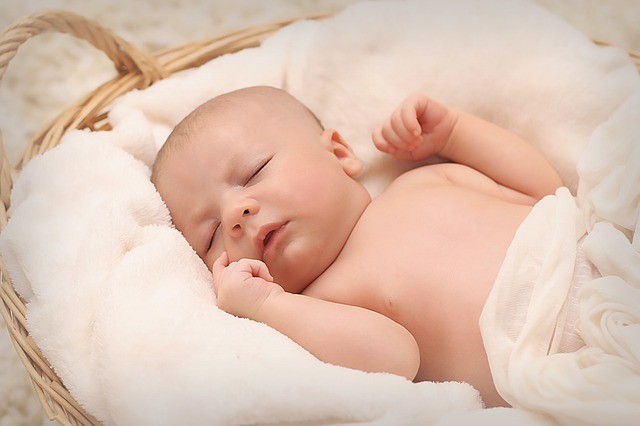Being a parent is a wonderful thing, but it can also be terrifying when something isn’t quite right with your son or daughter. Relying upon your instinct is one thing, but what if you’re not sure? What if you get something wrong?
Yes, being a parent is challenging, but arming yourself with all the information you need and knowing what to do and where to go if you really aren’t sure of the best course of action, will see you through. One of the biggest worries for a parent is when a child develops a fever, or a high temperature. This is normally the sign of an illness or infection somewhere within the body, and it’s important to seek out help when this becomes abnormally high.
Small babies may also develop a fever or a generally high temperature due to overdressing. This is far more common than you might think, but a baby is unable to tell you they are hot, and they are also far less able to regulate their own body temperature, compared to an older child. In this case, if you notice that your young baby has a fever or they seem generally hot and clammy, first look at whether you think they are wearing too many clothes, or they have too many general layers.
Of course, whenever your child seems ill or distressed, it can be extremely upsetting and worrying. In this case, new parents in particular may not know what to do for the best. It’s important to realise that fevers are common, but there are also some situations which do require medical attention. To give you a little more information and reassurance on fevers and high temperatures in children and babies, let’s look at the information given by the NHS. Remember however, every case is different, and you should go by what you see and what you feel – you know your child or baby better than anyone else, so if you’re concerned, seek help sooner rather than later.
About Fevers (High Temperature)
You will hear a fever referred to as a high temperature, and vice versa, but they are one and the same thing. The high temperature isn’t itself an illness, but a symptom of something else, usually an infection, as we mentioned before, which will require treatment by a doctor. In some cases, a high temperature isn’t high enough to cause serious concern and will simply disappear on its own, e.g. in the case of a viral infection/common cold. Knowing when to seek help and when to treat your child at home is therefore important.
In babies and children under the age of 5 years, a temperature of 38 degrees (celsius) or over requires medical attention. It’s important to realise that every child will develop a fever at some point, and it’s a very common occurrence. Every fever isn’t a cause for concern, but again, when the temperature reaches the higher level, it’s important to take action.
Most fevers are caused by something every simple, such as a cold or a cough, and in this case you can treat it at home, and wait for your child to get better with help methods. Of course, it is upsetting to see your child ill in this way, as their health is always your number one concern.
The symptoms of a fever/high temperature are:
- Feeling hot to the touch. You can usually tell this by touching their forehead, but also their stomach or back
- They may be sweaty, or simply clammy
- Their cheeks are usually flushed red or pink
- They will be irritated and seem unable to rest or relax
If you notice these symptoms it’s important to find out what your child’s temperature actually is. You can do this by purchasing an at home thermometer, and the good news is that these don’t cost the Earth. Check online, or head to a pharmacy or large supermarket for a good range to choose from. It’s not the best idea to use thermometers which are sited on the forehead, as these don’t always give you the most accurate reading, being far more open to environmental inaccuracies. Instead, it’s best to test under the armpit if you’re using a manual thermometer and read the result from there. You can also purchase digital thermometers, which will give you a set temperature number, rather than a rough range.
How to Look After Your Child if He/She Has a Fever
Firstly, if you’re at all worried then seek out medical help. That’s the most important thing to mention. You can never be too careful, and it’s far better to be safe than sorry.
If you’ve taken your child’s temperature, it isn’t to high, and you’re confident that you can treat the problem at home, there are a few things you can do to help your child feel more comfortable.
- Ensure they drink plenty of water or fluids, taking small sips regularly
- Don’t force them to eat solid food if they don’t really want it, instead make sure they drink fluids and offer milk if they will take it
- If you’re breastfeeding, continue to offer feeds
- Always check for dehydration, as this is a big problem. Signs to look out for include crying without tears, less wet nappies, eyes which appear to be sunken, and a dry mouth, constant thirst despite drinking plenty
- If your child/baby is sleeping, keep checking on them
- Re-check temperatures regularly
- Help to keep them cool by avoiding too many blankets on the bed, and too much clothes in general
- If your child is old enough, you may consider giving them the children’s version of Ibuprofen or Paracetamol (one only, not both). It is safe to give children’s Paracetamol to babies from two months of age upwards, and children’s Ibuprofen for babies from three months and upwards, provided they weight more than 11lbs, or 5kg (unless they suffer from asthma). Never give your child Aspirin if they are under 16 years
When to Get Help
If you have been looking after your child at home and they simply don’t seem to be getting better, or you’re worried in general, always seek medical attention as a matter of urgency. In addition, you should also seek help if any of the following apply:
- You have a baby who is under 3 months of age and their temperature is 38 degrees (celsius) or more
- You have a baby between 3-6 months of age and their temperature is 39 degrees (celsius) or more
- Your child/baby has a fit
- You notice that the fever accompanies a rash, which doesn’t disappear or fade if you apply pressure and roll a clear glass over the top of it. This could be a sign of meningitis and should be dealt with as a matter of urgency
- Your child/baby won’t stop crying, or it sounds like a different type of cry
- Their condition is deteriorating
- The high temperature and symptoms last for more than 5 days
In these cases you should call for emergency medical help or head to your nearest emergency department.
We should point out however that the overwhelming majority of fevers/high temperatures can be dealt with at home and will dissipate on their own after a few days. Children are regularly catching colds and coughs, and these can easily cause a fever in a small child. You will soon realise what is and isn’t normal for your baby/child and you can listen to your instincts as their mother or father. Of course, if you are unsure, then it doesn’t hurt to seek out medical advice, just to be on the safe side.
It’s important that if you are going to give your child any type of medication, you read the label carefully and watch for any adverse effects, if it is the first time you have given it to them. Never exceed the dosage and always ensure that you follow instructions strictly.
Fevers are extremely common, and whilst they can be worrying to see and experience, they are part and parcel in many cases of a child’s body reacting to an illness and their immune system kicking in and working to deal with the problem. Only when the fever becomes high (with the temperatures already mentioned) should you worry, or when symptoms accompanying the fever are worrying you. If you do notice the rash which doesn’t disappear when you roll a glass over it, never wait and see – head to the emergency room immediately. It isn’t always going to be meningitis if you see a rash accompanied by a fever, but it is a possibility and in this case, time is of the essence. You can never be too careful when it comes to your child’s health.




